Alogic DUCMA3 Handleiding
Bekijk gratis de handleiding van Alogic DUCMA3 (4 pagina’s), behorend tot de categorie Overige computer accessoire. Deze gids werd als nuttig beoordeeld door 16 mensen en kreeg gemiddeld 4.7 sterren uit 8.5 reviews. Heb je een vraag over Alogic DUCMA3 of wil je andere gebruikers van dit product iets vragen? Stel een vraag
Pagina 1/4

Specifications
Model DUCMA3
Input 1 x USB-C
Output 2 x DisplayPort, 1 x HDMI, 2 x USB-C 3.1 Gen 2 (10G) BC 1.2 and Apple Charging Support, 2 x USB-A 3.1
Gen1 (5G), 2 x USB-A 2.0, 1 x Audio / Microphone Jack, 1 x RJ45 Ethernet 1Gbps, 1 x SD Card
Resolution Up to 2 x 4K UHD 60Hz or 3 x 4K UHD 30Hz with DP 1.4 HBR3 with DSC enabled host*
*See resolution support tables below for maximum outputs
Warranty 2 Years
Package Contents
• 1 x Dock
• 1 x 170W AC Power Adapter
User Instructions
Powering the Dock:
The dock comes included with power cords for US, UK, EU and AU-NZ. Connect the suitable power cord (as per your region)
to the included power adapter. Connect the barrel end of the power adapter to the dock and the plug end of the cable to an
available power socket.
Connecting Devices to the Dock:
Connect external devices such as monitors, memory card, USB memory sticks, ethernet cable and headphone/mic to the dock,
as necessary. The following outlines the available ports and their functions.
Video Output Capabilities:
The following section outlines the maximum video output resolution supported by the dock in dierent display configurations.
The displayport alt mode version supported by the USB-C port on the laptop (HOST) will determine the number of displays,
resolution and refresh rates supported by the dock.
If in doubt about whether a USB-C port supports video output, consult the user manual for your computer or the support
information on the manufacturer’s website.
The device can be used with USB-C ports which do not support video output; however you will not be able to connect the HDMI
ports to external monitors and show video. The other ports (Ethernet, audio, card readers and USB ports) will be functional.
ALOGIC recommend the use of ALOGIC cables to ensure reliable, trouble free operation for your computer and peripherals.
USB-C Port Video Support:
Not all USB-C ports support video output. Many Windows and Chromebook computers have multiple USB-C ports, but only
support video output from one or two of them. If using a Windows or Chromebook machine it is important to ensure that you
plug the device into a port/ports which supports video output for it to be able to show video on external monitors.
Troubleshooting
Connecting the Dock to the Laptop:
The device is Plug and Play compatible and will be detected and configured by your computer automatically. This process
will take a few seconds the first time you plug the device into your laptop, and you may receive a notification that it has been
installed and is ready for use.
Once the device has been recognised and set up by your computer it is ready for use and you can connect other devices as
desired such as monitors, USB devices and a network cable.
Your laptop will also start charging with up to 100W of power when connected to the dock.
Not all USB-C ports on Windows computers support video output. Ensure that you connect the device to a port that are
video capable.
Refer to the USB-C Port Video Support section of this manual for further details.
Not every USB-C port on notebook computers supports charging. If your computer doesn’t start charging when a power
supply is connected to the device and the device is connected to your computer, try a dierent USB-C port on your machine
or consult the computer’s manual to determine which ports accept power from USB PD power sources.
The USB-C ports on the front of the unit supports fast charging of mobile devices. If charging a device, ensure you connect
it to this port.
Host (Laptop USB-C) Single Display
Dual Display Triple Display
MST Host (Independent/
Extended)
MST Host (Independent/
Extended
HBR3 DP1.4 with DSC 5120x2880@60Hz 2*3840x2160@60Hz 3*3840x2160@60Hz (with
reduced blanking)
HBR3 DP1.4 without
DSC 3840x2160@60Hz 2*3840x2160@30Hz 1*3840x2160@30Hz+
2*1920x1080P@60Hz
HBR2 DP1.2 3840x2160@30Hz 2*1920x1080P@60Hz 3*1920x1080P@30Hz
DisplayPort Logo Intel Thunderbolt
Logo
Symptom Solution
Video doesn’t
show on exter-
nal display
• Check that the HDMI cable is connected securely between the monitor and device and the device is
securely connected to the computer
• Check that the external monitor is turned on and set to the correct input
• Check that your computer is detecting the external display and is set to show video on it
• Check that the USB-C port on the computer that you have connected the device to supports video output
using DisplayPort Alternate Mode
• If the computer doesn’t detect the external monitor or output video after checking the above, restart your
computer and attempt again
Video drops out
intermittently
• Check that the HDMI cable is connected securely between the display and device
• Check that the device is securely connected to the computer
• Check that the HDMI cable being used to connect to the display is of good quality and isn’t damaged
Computer
doesn’t start
charging when
the device is
connected
• Ensure a USB Power Delivery power supply is connected to the USB-C port on the device marked PD
• Ensure that the power supply is connected at the wall and turned on, and the USB-C cable supplying
power is securely connected
• Verify that the USB-C port on the computer supports charging from a USB PD power source
Many USB-C ports that have no labelling support video output, however
USB-C ports which have a DisplayPort logo or Intel Thunderbolt logo
printed next to them almost certainly support video output and you
should look for these icons next to the ports on your computer.
Connect to wall socket
Insert the power cord into the
power adapter
Select the appropriate
power cord
Barrel End
Power Adapter
Dock (To Computer Port) USB-C Port Computer USB-C Port
Connect the included USB-C cable to the USB-C Port
from the back of the dock (To Computer Port) to the
USB-C Port on the computer
Connect to the power socket on the dock
• 1 x US; 1 x UK; 1 x EU; 1 x AU Power Cord
• 1 x User Manual
Schnellstartanleitung
Technische Daten
Modell DUCMA3
Eingang 1 x USB-C
Ausgänge 2 x DisplayPort, 1 x HDMI, 2 x USB-C 3.1 Gen 2 (10G) BC 1.2 and Apple Ladeunterstützung, 2 x USB-A
3.1 Gen1 (5G), 2 x USB-A 2.0, 1 x Audio / Microfon Stecker, 1 x RJ45 Ethernet 1Gbps, 1 x SD Karte
Auflösung Bis zu 2 x 4K UHD 60Hz oder 3 x 4K UHD 30Hz mit DP 1.4 HBR3 mit DSC-fähiger-host*
*Siehe die Tabellen zur Auflösungsunterstützung unten für maximale Ergebnisse
Gewährleistung 2 Jahre
Bedienungsanleitung
Das Dock einschalten:
Das Dock wird mit Netzkabeln für USA, Großbritannien, EU und AU-NZ geliefert. Schließen Sie das geeignete Netzkabel
(entsprechend Ihrer Region) an das mitgelieferte Netzteil an. Verbinden Sie das tonnenförmige Ende des Netzadapters mit dem
Dock und das Steckerende des Kabels mit einer verfügbaren Steckdose.
Anschließen von Geräten an das Dock:
Schließen Sie bei Bedarf externe Geräte wie Bildschirme, Speicherkarte, USB-Speichersticks, Ethernet-Kabel und Kopörer/
Mikrofon an das Dock an. Im Folgenden werden die verfügbaren Anschlüsse und ihre Funktionen skizziert.
Videoausgabe-Fähigkeiten:
Die Version des Anzeigeports im Alt-Modus, die vom USB-C-Anschluss des Laptops (HOST) unterstützt wird, bestimmt die
Anzahl der vom Dock unterstützten Anzeigen, die Auflösung und die Aktualisierungsraten.
Wenn Sie im Zweifel sind, ob ein USB-C-Anschluss die Videoausgabe unterstützt, konsultieren Sie das Benutzerhandbuch Ihres
Computers oder die Support-Informationen auf der Website des Herstellers.
Das Gerät kann mit USB-C-Anschlüssen verwendet werden, die keine Videoausgabe unterstützen; es ist jedoch nicht möglich,
die HDMI-Anschlüsse an externe Bildschirme anzuschließen und Videos zu zeigen. Die anderen Anschlüsse (Ethernet-, Audio-,
Kartenleser- und USB-Anschlüsse) werden funktionsfähig sein.
ALOGIC empfiehlt die Verwendung von ALOGIC-Kabeln, um einen zuverlässigen, störungsfreien Betrieb Ihres Computers und
Ihrer Peripheriegeräte zu gewährleisten.
USB-C-Anschluss Video-Unterstützung:
Nicht alle USB-C-Anschlüsse unterstützen die Videoausgabe. Viele Windows- und Chromebook-Computer verfügen über
mehrere USB-C-Anschlüsse, unterstützen aber nur die Videoausgabe von einem oder zwei dieser Anschlüsse. Wenn Sie einen
Windows- oder Chromebook-Computer verwenden, ist es wichtig sicherzustellen, dass Sie das Gerät an einen Port bzw. Ports
anschließen, der bzw. die die Videoausgabe unterstützt, damit es Video auf externen Bidlschirmen anzeigen kann.
Risoluzione dei problemi
Anschließen des Dock an den Laptop:
Das Gerät ist Plug-and-Play-kompatibel und wird von Ihrem Computer automatisch erkannt und konfiguriert. Dieser Vorgang
dauert einige Sekunden, wenn Sie das Gerät zum ersten Mal an Ihren Laptop anschließen, und Sie erhalten möglicherweise
eine Benachrichtigung, dass das Gerät installiert wurde und einsatzbereit ist.
Sobald das Gerät von Ihrem Computer erkannt und eingerichtet wurde, ist es einsatzbereit, und Sie können nach Belieben
andere Geräte wie Monitore, USB-Geräte und ein Netzwerkkabel anschließen.
Wenn Ihr Laptop an das Dock angeschlossen ist, beginnt er auch mit bis zu 100 Watt Leistung zu laden.
Nicht alle USB-C-Anschlüsse von Windows-Computern unterstützen die Videoausgabe. Stellen Sie sicher, dass Sie das
Gerät an einen Anschluss anschließen, der videofähig ist.
Weitere Einzelheiten finden Sie im Abschnitt USB-C-Anschluss Videounterstützung in diesem Benutzerhandbuch.
Nicht jeder USB-C-Anschluss an Notebook-Computern unterstützt das Aufladen. Wenn Ihr Computer nicht mit dem Aufladen
beginnt, wenn ein Netzteil an das Gerät angeschlossen ist und das Gerät an Ihren Computer angeschlossen ist, versuchen
Sie es mit einem anderen USB-C-Anschluss an Ihrem Gerät oder schlagen Sie im Handbuch des Computers nach, um
festzustellen, welche Anschlüsse Strom von USB-PD-Stromquellen annehmen.
Die USB-C-Anschlüsse an der Vorderseite des Geräts unterstützen das schnelle Laden von mobilen Geräten. Wenn Sie ein
Gerät aufladen, stellen Sie sicher, dass Sie es an diesen Anschluss anschließen.
Host (Laptop USB-C) Einzeldisplay
Zweifaches Display Dreifaches Display
MST Host (Unabhängig/
Erweitert)
MST Host (Unabhängig/
Erweitert
HBR3 DP1.4 mit DSC 5120x2880@60Hz 2*3840x2160@60Hz 3*3840x2160@60Hz (mit reduz-
ierter Ausblendung)
HBR3 DP1.4 ohne DSC 3840x2160@60Hz 2*3840x2160@30Hz 1*3840x2160@30Hz+
2*1920x1080P@60Hz
HBR2 DP1.2 3840x2160@30Hz 2*1920x1080P@60Hz 3*1920x1080P@30Hz
DisplayPort Symbol
Viele USB-C-Anschlüsse, die keine Beschriftung haben, unterstützen die
Videoausgabe. USB-C-Anschlüsse, auf denen das DisplayPort-Logo oder das Intel
Thunderbolt-Logo aufgedruckt ist, unterstützen jedoch mit ziemlicher Sicherheit
die Videoausgabe, und Sie sollten nach diesen Symbolen neben den Anschlüsse
auf Ihrem Computer suchen.
An Steckdose anschließen
Stecken Sie das Netzkabel in
das Netzteil
Wählen Sie das geeignete
Netzkabel
Kabel mit
Trommel-ende
Netzteil
Dock (Zum Computeranschluss)
USB-C-Anschluss
Computer USB-C-Anschluss
Schließen Sie das mitgelieferte USB-C-Kabel an den
USB-C-Anschluss auf der Rückseite des Docks (Zum
Computeranschluss) an den USB-C-Anschluss des
Computers an
Schließen Sie das Gerät an die Netzanschlussbuchse
am Dock an
Problem Lösung
Video wird auf der
externen Anzeige
nicht angezeigt
• Überprüfen Sie, ob das HDMI-Kabel sicher zwischen Monitor und Gerät angeschlossen ist und das Gerät sicher mit dem Computer
verbunden ist
• Überprüfen Sie, ob der externe Monitor eingeschaltet und auf den richtigen Eingang eingestellt ist.
• Überprüfen Sie, ob Ihr Computer den externen Bildschirm erkennt und so eingestellt ist, dass er Video darauf anzeigt
• Überprüfen Sie, ob der USB-C-Anschluss des Computers, an den Sie das Gerät angeschlossen haben, die Videoausgabe mit
DisplayPort Alternate Mode unterstützt
• Wenn der Computer den externen Bildschirm nicht erkennt oder kein Video ausgibt, nachdem Sie die oben genannten Punkte
überprüft haben, starten Sie den Computer neu und versuchen Sie es erneut.
Video fällt zeitweise
aus
• Überprüfen Sie, ob das HDMI-Kabel sicher zwischen Bildschirm und Gerät angeschlossen ist
• Überprüfen Sie, ob das Gerät sicher mit dem Computer verbunden ist
• Prüfen Sie, ob das HDMI-Kabel, das zum Anschluss an den Bildschirm verwendet wird, von guter Qualität und nicht beschädigt ist
Computer beginnt
nicht mit dem Laden,
wenn das Gerät
angeschlossen ist
• Stellen Sie sicher, dass eine USB-Stromversorgung an den USB-C-Anschluss des mit PD
• Vergewissern Sie sich, dass die Stromversorgung an der Wand angeschlossen und eingeschaltet ist und dass das USB-C-Kabel zur
Stromversorgung sicher angeschlossen ist.
• Überprüfen Sie, ob der USB-C-Anschluss am Computer das Aufladen von einer USB-PD-Stromquelle unterstützt
Packungsinhalt
• 1 x Dock
• 1 x 170W AC Power Adapte
• 1 x US; 1 x UK; 1 x EU; 1 x AU Netzkabel
• 1 x Benutzerhandbuch
Intel Thunderbolt
Symbol
Guida Rapida
Specifiche
Modello DUCMA3
Ingresso 1 x USB-C
Uscita 2 x Porte di visualizzazione, 1x HDMI, 2 x USB-C 3.1 Gen 2 (10G) BC 1.2 e supporto di ricarica Apple, 2 x
USB-A 3.1 Gen1 (5G), 2 x USB-A 2.0, 1 x Audio / Jack per Microfono,1x Ethernet RJ45 1 Gbps, 1 x scheda SD
Risoluzione Fino a 2 x 4K UHD 60Hz o 3 x 4K UHD 30Hz con DP 1.4 HBR3 con host DSC abilitato*
*Vedere le tabelle di supporto della risoluzione sotto riportate per le prestazioni massime
Garanzia 2 Anni
La confezione include
• 1 x Connettore
• 1 x 170W AC Adattatore di
alimentazione
Istruzioni per l’utente
Alimentare il connettore:
Il connettore viene fornito con i cavi di alimentazione per gli Stati Uniti, il Regno Unito, l’Unione Europea e l’Australia - Nuova
Zelanda. Collegare il cavo di alimentazione adatto (secondo la propria regione) all’adattatore di alimentazione in dotazione.
Collegare l’estremità rotonda del cavo dell’adattatore di alimentazione al connettore e l’estremità dello spinotto del cavo ad una
presa di corrente disponibile.
Collegare dispositive al connettore:
Se necessario, collegare al connettore dispositivi esterni come monitor, scheda di memoria, chiavette USB, cavo ethernet e
cue/microfono. Di seguito sono indicate le porte disponibili e le loro funzioni.
Capacità di uscita video:
La seguente sezione descrive la massima risoluzione di uscita video supportata dal connettore in diverse configurazioni
di visualizzazione. La versione alt mode della porta di visualizzazione supportata dalla porta USB-C del portatile (HOST)
determinerà il numero di visualizzazioni, la risoluzione e le velocità di aggiornamento supportate dal connettore.
In caso di dubbi sul fatto che una porta USB-C supporti l’uscita video, consultare il manuale dell’ utente del proprio computer o le
informazioni di supporto sul sito web del produttore.
Il dispositivo può essere utilizzato con porte USB-C che non supportano l’uscita video; tuttavia, non sarà possibile collegare le
porte HDMI a monitor esterni e mostrare il video. Le altre porte (Ethernet, audio, lettori di schede e porte USB) saranno operative.
ALOGIC raccomanda l’uso di cavi ALOGIC per garantire un funzionamento adabile e senza problemi per il computer e le
periferiche.
Supporto video porta USB-C:
Non tutte le porte USB-C supportano l’uscita video. Molti computer Windows e Chromebook hanno più porte USB-C, ma
supportano solo l’uscita video da una o due di esse. Se si utilizza un computer Windows o Chromebook è importante assicurarsi
di collegare il dispositivo a una porta/porte che supporti l’uscita video per poter mostrare il video su monitor esterni.
Risoluzione dei problemi
Collegare il connettore al portatile:
Il dispositivo è compatibile con il Plug and Play e sarà rilevato e configurato automaticamente dal vostro computer. Questo
processo richiederà alcuni secondi la prima volta che si collega il dispositivo al computer portatile, e si potrebbe ricevere una
notifica che è stato installato ed è pronto per l’uso.
Una volta che il dispositivo è stato riconosciuto e impostato dal computer è pronto per l’uso ed è possibile collegare altri
dispositivi a piacere come monitor, dispositivi USB e un cavo di rete.
Il vostro portatile inizierà anche a caricarsi fino ad un massimo di 100W di potenza quando è collegato al connettore.
Non tutte le porte USB-C dei computer Windows supportano l’uscita video. Assicurarsi di collegare il dispositivo ad una
porta che supporta video.
Per ulteriori dettagli consultare la sezione Supporto video della porta USB-C di questo manuale.
Non tutte le porte USB-C dei computer notebook supportano la ricarica. Se il computer non inizia a caricarsi quando un
alimentatore è collegato al dispositivo e il dispositivo è collegato al computer, provare una diversa porta USB-C sulla vostra
unità o consultare il manuale del computer per determinare quali porte accettano l’alimentazione da fonti di alimentazione
USB PD.
Le porte USB-C sulla parte anteriore dell’unità supportano la ricarica rapida dei dispositivi mobili. Se si carica un
dispositivo, assicurarsi di collegarlo a questa porta.
Host (USB-C per
Portatile) Visualizzazione singola Doppia visualizzazione Visualizzazione tripla
MST Host (Indidendente/ Esteso) MST Host (Indipendente/ Esteso)
HBR3 DP1.4 with DSC 5120x2880@60Hz 2*3840x2160@60Hz 3*3840x2160@60Hz (con
soppressione ridotta)
HBR3 DP1.4 without
DSC 3840x2160@60Hz 2*3840x2160@30Hz 1*3840x2160@30Hz+
2*1920x1080P@60Hz
HBR2 DP1.2 3840x2160@30Hz 2*1920x1080P@60Hz 3*1920x1080P@30Hz
DisplayPort Logo Intel Thunderbolt
Logo
Sintomo Soluzione
Il video non appare
sul visualizzatore
esterno
• Controllare che il cavo HDMI sia collegato saldamente tra il monitor e il dispositivo e che il dispositivo sia collegato saldamente al
computer
• Controllare che il monitor esterno sia acceso e impostato sull’ingresso corretto
• Controllare che il computer rilevi il visualizzatore esterno e che sia impostato per la visualizzazione di un video su di esso
• Controllare che la porta USB-C del computer a cui avete collegato il dispositivo supporti l’uscita video utilizzando la modalità
Alternate Mode della porta di visualizzazione
• Se il computer non rileva il monitor esterno o il video in uscita dopo aver controllato quanto sopra, riavviare il computer e tentare di
nuovo
Il video si interrompe
a intermittenza
• Controllare che il cavo HDMI sia collegato saldamente tra il visualizzatore e il dispositivo
• Controllare che il dispositivo sia collegato saldamente al computer
• Controllare che il cavo HDMI utilizzato per il collegamento al visualizzatore sia di buona qualità e che non sia danneggiato
Il computer non
inizia a caricare
quando il dispositivo
è collegato
• Assicurarsi che un alimentatore USB Power Delivery sia collegato alla porta USB-C sul dispositivo contrassegnato come PD
• Assicurarsi che l’alimentazione sia collegata alla parete e che sia accesa, che il cavo USB-C che fornisce l’alimentazione sia
saldamente collegato
• Verificare che la porta USB-C del computer supporti la ricarica da una fonte di alimentazione USB PD
Molte porte USB-C che non hanno un’etichetta supportano l’uscita video,
tuttavia le porte USB-C che hanno un logo Porta di Visualizzazione o il logo Intel
Thunderbolt stampato accanto ad esse quasi certamente supportano l’uscita
video e dovreste cercare queste icone accanto alle porte del vostro computer.
Collegare alla presa nella parete
Inserire il cavo di alimentazione
nell’adattatore di corrente
Selezionare il cavo di
alimentazione corretto
Fine del
barilotto
Adattatore di Corrente
Porta USB-C del connettore (alla
porta computer)
Porta USB-C del computer
Collegare il cavo USB-C in dotazione alla porta USB-C
dal retro del connettore (alla porta del computer) alla
porta USB-C del computer.
Collegare alla presa di corrente sul dock
• 1 x US; 1 x UK; 1 x EU; 1 x AU Cavo di Alimentazione
• 1 x Manuale per l’utente


クイックスタートガイド
Warning
• This device is designed for indoors use only.
• Do not deliberately damage the device or expose it to damp, direct sunlight, or high temperature conditions.
• Disassembling or failing to properly use and care for your device will void the warranty on the product.
• ALOGIC bears no responsibility for damage to the device or incidental damages arising from improper use or lack of care and
is not liable for repair/replacement of the device or other damages in these circumstances.
Advertencia
• Este dispositivo está diseñado sólo para uso en interiores.
• No dañe deliberadamente el dispositivo ni lo exponga a humedad, a la luz solar directa o a condiciones de alta temperatura.
• Desarmar o faltar al uso y cuidado apropiados de su dispositivo, anulará la garantía del producto.
• ALOGIC no asume la responsabilidad por daños ocasionados al dispositivo ni por daños incidentales que surjan de su uso
inapropiado o falta de cuidado y no se hace responsable por las reparaciones/reemplazo del dispositivo o de otros daños en
estas circunstancias.
Advertencia
• Cet appareil est conçu pour une utilisation à l’intérieur uniquement.
• Ne pas endommager délibérément l’appareil ni l’exposer à l’humidité, à la lumière directe du soleil ou à des températures
élevées.
• Le démontage ou l’utilisation et l’entretien inadéquats de votre appareil annuleront la garantie sur le produit.
• ALOGIC décline toute responsabilité pour les dommages causés à l’appareil ou les dommages accidentels résultant d’une
mauvaise utilisation ou d’un manque d’entretien et n’est pas responsable de la réparation/remplacement de l’appareil ou
d’autres dommages dans ces circonstances.
Attenzione
• Questo dispositivo è progettato solo per l’uso in ambienti interni.
• Non danneggiare deliberatamente il dispositivo e non esporlo a umidità, luce solare diretta o condizioni di temperatura elevata.
• Lo smontaggio o il mancato uso corretto e la mancata cura del dispositivo renderà nulla la garanzia sul prodotto.
• ALOGIC non si assume alcuna responsabilità per danni al dispositivo o per danni accidentali derivanti dall’uso improprio o dalla
mancanza di cura e non è responsabile per la riparazione/sostituzione del dispositivo o per altri danni in queste circostanze.
Warnung
• Dieses Gerät ist nur für den Gebrauch in Innenräumen vorgesehen.
• eschädigen Sie das Gerät nicht absichtlich oder setzen Sie es nicht Feuchtigkeit, direktem Sonnenlicht oder hohen
Temperaturen aus.
• Wenn Sie das Gerät zerlegen oder nicht ordnungsgemäß verwenden und pflegen, erlischt die Garantie auf das Produkt.
• LOGIC trägt keine Verantwortung für Schäden am Gerät oder zufällige Schäden, die durch unsachgemäßen Gebrauch oder
mangelnde Pflege entstehen, und ist unter diesen Umständen nicht für Reparatur/Austausch des Geräts oder andere
Schäden haftbar.
警告
• このデバイスは屋内での使用のみを目的として設計されています。
• デバイスを故意に損傷したり、湿気のある場所、直射日光、または高温の状態にさらさないでください。
• デバイスを分解したり、デバイスを適切に使用してお手入れを怠ると、製品の保証が無効になります。
• ALOGICは、デバイスの損傷または不適切な使用または注意の欠如に起因する偶発的な損傷について責任を負いません。また、これらの状況に
おけるデバイスの修理/交換またはその他の損傷について責任を負いません。
This device complies with Part 18 of the FCC rules. Operation is subject to the following two conditions:
(1) This device may not cause harmful interference, and
(2) This device must accept any interference received, including interference that may cause UNDESIRED OPERATION.
NOTE: Any changes or modifications to this unit not expressly approved by the party responsible for compliance could void the
user’s authority to operate the equipment
Note
Nota
Remarque
Nota
Hinweis
注意
仕様書
型番 DUCMA3
入力 1 x USB-C
出力 2 x DisplayPort、1 x HDMI、2 x USB-C 3.1 Gen 2(10G)BC 1.2およびApple充電サポート、2 x USB-A 3.1
Gen1(5G)、2 x USB-A 2.0、1 xオーディオ/マイクジャック 、1 x RJ45イーサネット1Gbps、1 x SDカード
解像度 最大2 x 4K UHD 60Hzまたは3 x 4K UHD 30Hz、DP 1.4 HBR3、DSC対応ホスト*
*最大出力については、以下の解像度サポートの表を参照してください
保証 2年
パッケージ内容
• 1 x ドック
• 1 x 170W AC 電源アダプター
操作説明書
ドックへの電力供給:
ドックは、米国、イギリス、欧州、AU-NZ向けの電源コードを含有しています。 含有の電源アダプターに適切な電源コード(地域によって)接続してく
ださい。 電源アダプターのバレル側をドックに接続し、ケーブルのプラグ側を利用できる電源ソケットに接続してください。
ドックへのデバイスの接続:
必要に応じて、モニター、メモリカード、USBメモリスティック、イーサネットケーブル、ヘッドフォン/マイクなどの外部デバイスをドックに接続します。 以下
は、使用可能なポートとその機能の概要です。.
ビデオ出力機能:
次のセクションでは、さまざまなディスプレイ構成でドックがサポートする最大ビデオ出力解像度の概要を説明します。 ラップトップ(ホスト)のUSB-C
ポートでサポートされているディスプレイポートの代替モードバージョンによって、ドックでサポートされているディスプレイの数、解像度、リフレッシュレー
トが決まります。
USB-Cポートがビデオ出力をサポートしているかどうか不明な場合は、コンピューターのユーザーマニュアルまたは製造元のWebサイトのサポート情報
を参照してください。
このデバイスは、ビデオ出力をサポートしないUSB-Cポートで使用できます。 ただし、HDMIポートを外部モニターに接続してビデオを表示することはで
きません。 他のポート(イーサネット、オーディオ、カードリーダー、USBポート)は機能します。
ALOGIC推奨ALOGICケーブルの使用 コンピュータと周辺機器の信頼できるトラブルのない操作を保証するため。
USB-Cポートビデオのサポート:
すべてのUSB-Cポートがビデオ出力をサポートしているわけではありません。 多くのWindowsおよびChromebookコンピュータには複数のUSB-Cポー
トがありますが、そのうちの1つまたは2つからのビデオ出力のみをサポートしています。 WindowsまたはChromebookマシンを使用している場合は、デバ
イスをビデオ出力をサポートするポートに接続して、外部モニターでビデオを表示できるようにすることが重要です。
トラブルシューティング
ドックをラップトップに接続する:
デバイスはプラグアンドプレイに対応しており、コンピューターによって自動的に検出および構成されます。 このプロセスは、デバイスをラップトップに初め
て接続したときに数秒かかり、インストールされて使用できるようになったという通知を受け取る場合があります。
デバイスがコンピューターによって認識され、セットアップされると、使用できるようになり、モニター、USBデバイス、ネットワークケーブルなど、必要に応
じて他のデバイスを接続できます。
ドックに接続すると、ラップトップは最大100Wの電力で充電を開始します。
WindowsコンピューターのすべてのUSB-Cポートがビデオ出力をサポートしているわけではありません。 デバイスがビデオ対応のポートに接続され
ていることを確認してください。
詳細については、このマニュアルのUSB-Cポートビデオサポートのセクションを参照してください
ノートブックコンピュータのすべてのUSB-Cポートが充電をサポートしているわけではありません。 電源がデバイスに接続されているときにコンピュ
ーターが充電を開始せず、デバイスがコンピューターに接続されている場合は、コンピューターの別のUSB-Cポートを試すか、コンピューターのマニ
ュアルを参照して、USB PDから電力を受け取るポートを確認してください 電源。
ユニット前面のUSB-Cポートは、モバイルデバイスの高速充電をサポートしています。 デバイスを充電する場合は、必ずこのポートに接続し
てください。
ホスト(ラップトップ
USB-C) シングルディスプレイ
デュアルディスプレイ トリプルディスプレイ
MSTホスト(独立/拡張) MSTホスト(独立/拡張
HSC3 DP1.4とDSC 5120x2880@60Hz 2*3840x2160@60Hz 3*3840x2160@60Hz (ブランキング
を減らして)
HBR3 DP1.4なしDSC 3840x2160@60Hz 2*3840x2160@30Hz 1*3840x2160@30Hz+
HBR2 DP1.2 3840x2160@30Hz 2*1920x1080P@60Hz 3*1920x1080P@30Hz
DisplayPortロゴ Intel Thunderboltロゴ
症状 解決
ビデオが外部ディ
スプレイに表示さ
れない
• HDMIケーブルがモニターとデバイス間でしっかりと接続され、デバイスがコンピューターにしっかりと接続されていることを確
認します
• 外付けモニターがオンになっていて、正しい入力に設定されていることを確認します
• コンピュータが外部ディスプレイを検出しており、ビデオを表示するように設定されていることを確認します
• デバイスを接続したコンピューターのUSB-CポートがDisplayPort代替モードを使用したビデオ出力をサポートすることを
確認します
• 上記を確認した後、コンピューターが外部モニターを検出しない、またはビデオを出力しない場合は、コンピューターを再
起動して再試行してください。
ビデオが断続的に
途切れる
• HDMIケーブルがディスプレイとデバイスの間にしっかりと接続されていることを確認します
• デバイスがコンピュータにしっかりと接続されていることを確認します
• ディスプレイへの接続に使用されているHDMIケーブルが高品質で損傷していないことを確認します
デバイスが接続さ
れているときにコン
ピューターが充電
を開始しない
• USB Power Delivery電源がPDとマークされたデバイスのUSB-Cポートに接続されていることを確認します
• 電源が壁に接続され、電源が入っていること、および電源を供給するUSB-Cケーブルがしっかりと接続されていることを
確認します
• コンピューターのUSB-CポートがUSB PD電源からの充電をサポートしていることを確認します
ラベル付けされていない多くのUSB-Cポートはビデオ出力をサポートしていますが、そ
の横にDisplayPortロゴまたはIntel Thunderboltロゴが印刷されているUSB-Cポー
トはほぼ確実にビデオ出力をサポートしており、コンピューターのポートの横にあるこれ
らのアイコンを探す必要があります 。
壁のソケットに接続します
電源に電源コードを挿
入します
適切な電源コードを選
択します
バレルエンド
電源アダプタ
ドック(コンピュータポートへ)USB コンピュータUSB-
付属のUSB-Cケーブルをドックの背面から(コンピューター
ポートへ)のUSB-CポートにコンピューターのUSB-Cポート
に接続します
ドックの電源ソケットに接続します
• 1 x US; 1 x UK; 1 x EU; 1 x AU 電源コード
• 1 x ユーザーマニュアル
Guía de inicio rápido
Especificaciones
Modelo DUCMA3
Entrada 1 x USB-C
Salida
2 x PuertodelMonitor, 1 x HDMI, 2 x USB-C 3.1 Gen 2 (10G) BC 1.2 y Admisión de recarga de Apple, 2
x USB-A 3.1 Gen1 (5G), 2 x USB-A 2.0, 1 x Conector de Audio / Micrófono, 1 x RJ45 Ethernet 1Gbps, 1 x
Tarjeta SD
Resolución Hasta 2 x 4K UHD 60Hz o 3 x 4K UHD 30Hz con DP 1.4 HBR3 con host habilitado DSC*
*Ver a continuación las tablas de admisión de resolución para máximas salidas
Garantía 2 años
Contenidos del paquete
• 1 x Dock
• 1 x 170W AC Power Adapter
Instrucciones para el Usuario
Alimentando el Dock:
El dock vi ene incluido con cables para EU, RU, EU y AU-NZ. Conecte el cable de corriente adecuado (de acuerdo a su región) al
adaptador de corriente incluido. Conecte la cabeza del cable del adaptador de corriente al dock y la otra punta del cable a un
enchufe de corriente disponible
Conexión de los dispositivos al Dock:
Conecte los dispositivos externos al dock, como monitores, tarjeta de memoria, memoria USB, cables de ethernet y audífonos/
mic, según sea necesario. La siguiente imagen muestra los puertos disponibles y sus funciones.
Capacidades de salida de video:
La siguiente sección muestra la resolución máxima de salida de video que el dock admite en sus diferentes configuraciones del
monitor. La versión displayport alt mode admitida por el puerto USB-C en la laptop (HOST) determinará el número de monitores,
la resolución y los rangos de refrescamiento admitidos por el dock.
Si tiene dudas acerca de si un puerto USB-C admite salida de video, consulte el manual del usuario de su computador o la
información sobre admisiones en el sitio web del fabricante.
El dispositivo puede usarse con puertos USB-C que no admiten salida de video; sin embargo, usted no podrá conectar los
puertos HDMI a monitores externos para mostrar un video. Los otros puertos (Ethernet, audio, lectores de tarjetas y puertos USB)
estarán operativos.
ALOGIC recommend the use of ALOGIC cables to ensure reliable, trouble free operation for your computer and peripherals.
Admisión de video del puerto USB-C:
No todos los puertos USB-C admiten salida de video. Muchos computadores Windows y Chromebook tienen múltiples puertos
USB-C, pero sólo admiten salida de video de uno o dos. Si está usando una máquina Windows o Chromebook, es importante
asegurarse de enchufar el dispositivo en el/los puerto/s que admiten salida de video para que pueda mostrar videos en
monitores externos.
Solución de Problemas
Conexión del Dock a la Laptop:
El dispositivo es compatible con Plug and Play y será automáticamente detectado y configurado por su computador. Este
proceso se tomará unos segundos la primera vez que enchufe el dispositivo en su laptop, y es posible que reciba notificación
de que p2-ha sido instalado y de que está listo para ser usado.
Una vez que el dispositivo haya sido reconocido e instalado por su computador, está listo para ser usado y usted puede
conectar otros dispositivos que guste, tal como monitores, dispositivos USB y cables de red.
Su laptop también comenzará a cargarse con hasta 100W de poder cuando se conecte al dock.
No todos los puertos USB-C en computadoras Windows admiten salida de video. Asegúrese de conectar el dispositivo a un
puerto que permita video.
Consulte la sección de Asistencia de Video del puerto USB-C en este manual para más detalles.
No todos los puertos USB-C en computadores Notebook permiten recarga. Si su computador no comienza a cargarse
cuando se conecta un cargador de energía al dispositivo y el dispositivo es conectado a su computador, pruebe un puerto
USB-C diferente en su máquina o consulte el manual de su computador para determinar cuáles puertos admiten energía de
un USB de fuente de poder PD.
Los puertos USB-C en la parte delantera de la unidad admiten recarga rápida de dispositivos móviles. Si va a cargar un
dispositivo, asegúrese de conectarlo a este puerto.
Host (Laptop USB-C) Un Monitor
Doble Monitor Triple Monitor
Host MST (Independiente/
Extendido)
Host MST (Independiente/
Extendido
HBR3 DP1.4 with DSC 5120x2880@60Hz 2*3840x2160@60Hz 3*3840x2160@60Hz (con
supresión reducida)
HBR3 DP1.4 without
DSC 3840x2160@60Hz 2*3840x2160@30Hz 1*3840x2160@30Hz+
2*1920x1080P@60Hz
HBR2 DP1.2 3840x2160@30Hz 2*1920x1080P@60Hz 3*1920x1080P@30Hz
Logo de
PuertodeMonitor Logo de
Intel Thunderbolt
Síntoma Solución
El video no se mues-
tra en el monitor
externo
• Verifique que el cable HDMI esté bien conectado entre el monitor y el dispositivo y que el dispositivo esté bien conectado al
computador.
• Verifique que el monitor externo esté encendido y que la entrada correcta esté configurada
• Verifique que su computador detecta la pantalla externa y que está configurada para mostrar un video en ella
• Verifique que el puerto USB-C del computador al cual usted p2-ha conectado el dispositivo, admite salida de video usando el Modo
alterno de DisplayPort
Si el computador no detecta el monitor externo o la salida de video después de verificar lo anterior, reinicie su computador y pruebe
de nuevo
El video se muestra
intermitentemente
• Verifique que el cable HDMI esté bien conectado entre el monitor y el dispositivo
• Verifique que el dispositivo esté bien conectado al computador
• Verifique que el cable HDMI que se está usando para conectar la pantalla es de buena calidad y no está dañado
El computador no
comienza a cargar
cuando se conecta
el dispositivo
• Asegúrese de que un cargador de energía USB esté conectado al puerto USB-C en el dispositivo marcado PD
• Asegúrese de que el cargador de energía esté conectado a la pared y esté encendido, y de que el cable USB-C que transmite la
energía esté bien conectado
• Verifique que el puerto USB-C en el computador admita la carga de un USB de un cargador de energía PD
uchos puertos USB-C no tienen etiquetada la admisión de salida de video, pero
los que muestran un logo para Puerto de Monitor o logo de Intel Thunderbolt
impreso a un lado, es casi seguro que admitan salida de video y usted debe
buscar estos íconos ubicados a un lado de los puertos en su computador.
Conecte al enchufe en la pared
Inserte el cable de corriente en
el adaptador de corriente
Seleccione el cable de
corriente apropiado
Cabeza del
cable
Adaptador de corriente
Dock (al puerto del computador)
Puerto USB-C
Puerto USB-C del computador
Conecte el cable USB-C incluido al puerto USB-C
desde la parte posterior del dock (al puerto del
Computador) al puerto USB-C en el computador
Conecte al enchufe de electricidad
en el dock
• 1 x US; 1 x UK; 1 x EU; 1 x AU Power Cord
• 1 x User Manual
Caractéristiques
Modèle DUCMA3
Entrée 1 x USB-C
Sortie 2 x port d'achage, 1 x HDMI, 2 x USB-C 3.1 Gen 2 (10G) BC 1.2 et Soutien du système de recharge Apple,
2 x USB-A 3.1 Gen1 (5G), 2 x USB-A 2.0, 1 x prise audio/microphone, 1 x RJ45 Ethernet 1Gbps, 1 x carte SD
Résolution Jusqu’à 2 x 4K UHD 60Hz ou 3 x 4K UHD 30Hz avec DP 1.4 HBR3 équipé d’un hôte DSC*.
* Voir les tableaux de soutien aux résolutions ci-dessous pour les résultats maximums
Garantie 2 ans
Contenu de l’emballage
• 1 x Dock
• 1 x 170W Adaptateur secteur
Consignes d’utilisation
Alimentation du système Dock :
Le système dock est livré avec des câbles d’alimentation pour les États-Unis, le Royaume-Uni, l’Union européenne et l’Australie
et la Nouvelle-Zélande. Branchez le cordon d’alimentation approprié (selon votre région) à l’adaptateur électrique inclus.
Branchez l’extrémité de l’adaptateur d’alimentation au système Dock et l’extrémité du câble à une prise de courant disponible.
Connexion des appareils au système Dock:
Connectez des dispositifs externes tels que des écrans, des cartes mémoire, des clés USB, un câble Ethernet et un casque/
micro au système Dock, si nécessaire. Les paragraphes suivants décrivent les ports disponibles et leurs fonctions.
Capacités de sortie vidéo:
La section suivante décrit la résolution maximale de sortie vidéo prise en charge par le système dock dans diérentes
configurations d’achage. La version du mode alt du port d’achage prise en charge par le port USB-C de l’ordinateur portable
(HOST) déterminera le nombre d’achages, la résolution et les taux de rafraîchissement pris en charge par le système Dock.
En cas de doute quant à savoir si un port USB-C prend en charge la sortie vidéo, consultez le manuel d’utilisation de votre
ordinateur ou les informations d’assistance sur le site web du fabricant.
L’appareil peut être utilisé avec des ports USB-C qui ne prennent pas en charge la sortie vidéo ; cependant, vous ne pourrez
pas connecter les ports HDMI à des moniteurs externes et acher la vidéo. Les autres ports (Ethernet, audio, lecteurs de cartes
et ports USB) seront fonctionnels.
ALOGIC préconise l’utilisation de câbles ALOGIC pour assurer un fonctionnement fiable et sans problème de votre ordinateur
et de vos périphériques.
Assistance vidéo sur le port USB-C:
Tous les ports USB-C ne prennent pas en charge la sortie vidéo. De nombreux ordinateurs Windows et Chromebook disposent
de plusieurs ports USB-C, mais ne prennent en charge la sortie vidéo que d’un ou deux d’entre eux. Si vous utilisez un
ordinateur Windows ou Chromebook, il est important de vous assurer que vous branchez l’appareil dans un ou plusieurs ports
qui prennent en charge la sortie vidéo pour qu’il puisse acher la vidéo sur des moniteurs externes.
Troubleshooting
Connexion du Dock à l’ordinateur portable:
L’appareil est compatible avec la technologie « Plug and Play » et sera détecté et configuré automatiquement par votre
ordinateur. Ce processus prendra quelques secondes la première fois que vous brancherez l’appareil sur votre ordinateur
portable, et vous recevrez peut-être une notification vous informant que l’appareil a été installé et qu’il est prêt à être utilisé.
Une fois que l’appareil a été reconnu et configuré par votre ordinateur, il est prêt à l’emploi et vous pouvez connecter d’autres
appareils à votre guise, tels que des moniteurs, des périphériques USB et un câble réseau.
Votre ordinateur portable commencera également à se charger avec une puissance allant jusqu’à 100W lorsqu’il est connecté
au système Dock.
Tous les ports USB-C des ordinateurs Windows ne prennent pas en charge la sortie vidéo. Veillez à connecter l’appareil à
un port capable de recevoir la vidéo.
Reportez-vous à la section Assistance vidéo du port USB-C de ce manuel pour plus de détails.
Tous les ports USB-C des ordinateurs portables ne prennent pas en charge le chargement. Si votre ordinateur ne
commence pas à se charger lorsqu’une alimentation est connectée à l’appareil et que celui-ci est connecté à votre
ordinateur, essayez un autre port USB-C sur votre machine ou consultez le manuel de l’ordinateur pour déterminer quels
ports acceptent l’alimentation par des sources d’alimentation USB PD.
Les ports USB-C situés à l’avant de l’appareil permettent de charger rapidement les appareils mobiles. Si vous chargez un
appareil, assurez-vous de le connecter à ce port.
Hôte (Ordinateur
portable USB-C) Écran unique
Double écran Triple écran
Hôte MST (Indépendant/
Étendue)
Hôte MST (Indépendant/
Étendue
HBR3 DP1.4 with DSC 5120x2880@60Hz 2*3840x2160@60Hz 3*3840x2160@60Hz (avec
réduction de l’occultation)
HBR3 DP1.4 without
DSC 3840x2160@60Hz 2*3840x2160@30Hz 1*3840x2160@30Hz+
2*1920x1080P@60Hz
HBR2 DP1.2 3840x2160@30Hz 2*1920x1080P@60Hz 3*1920x1080P@30Hz
DisplayPort Logo Intel Thunderbolt
Logo
Symptôme Solution
La vidéo ne s’ache
pas sur un écran
externe
• Vérifiez que le câble HDMI est bien connecté entre l’écran et l’appareil et que l’appareil est bien connecté à l’ordinateur
• Vérifiez que le moniteur externe est allumé et réglé sur la bonne entrée
• Vérifiez que votre ordinateur détecte l’achage externe et qu’il est configuré pour y acher la vidéo
• Vérifiez que le port USB-C de l’ordinateur auquel vous avez connecté l’appareil prend en charge la sortie vidéo en mode alternatif
DisplayPort
• Si l’ordinateur ne détecte pas le moniteur externe ou la sortie vidéo après avoir vérifié ce qui précède, redémarrez votre ordinateur
et essayez à nouveau
La vidéo s’éteint
par intermittence
• Vérifiez que le câble HDMI est bien connecté entre l’écran et l’appareil
• Vérifiez que l’appareil est bien connecté à l’ordinateur
• Vérifiez que le câble HDMI utilisé pour se connecter à l’écran est de bonne qualité et n’est pas endommagé
L’ordinateur ne
commence pas
à se charger
lorsque l’appareil est
connecté
• Assurez-vous qu’un bloc d’alimentation USB est connecté au port USB-C de l’appareil marqué PD
• Assurez-vous que l’alimentation électrique est connectée au mur et allumée, et que le câble USB-C qui fournit l’alimentation est bien
branché
• Vérifiez que le port USB-C de l’ordinateur permet de charger à partir d’une source d’alimentation USB PD
De nombreux ports USB-C qui n’ont pas d’étiquetage prennent en charge la sortie
vidéo. Cependant, les ports USB-C qui ont un logo DisplayPort ou un logo Intel
Thunderbolt imprimé à côté d’eux prennent presque certainement en charge la sortie
vidéo et vous devriez rechercher ces icônes à côté des ports sur votre ordinateur.
Branchement sur une prise de courant
Insérez le cordon d’alimentation
dans l’adaptateur électrique
Sélectionnez le cordon
d’alimentation approprié
Extrémité du
tube
Adaptateur secteur
Port de dock (au port de l’ordinateur) USB-C Port USB-C de l’ordinateur
Connectez le câble USB-C fourni au port USB-C de
l’arrière du dock (Au port d’ordinateur) au port USB-C
de l’ordinateur
Connexion à la prise de courant et sur dock
• 1 x US; 1 x UK; 1 x EU; 1 x AU Cordon d’alimentation
• 1 x Manuel de l’utilisateur
Guide de démarrage rapide
Product specificaties
| Merk: | Alogic |
| Categorie: | Overige computer accessoire |
| Model: | DUCMA3 |
| Kleur van het product: | Zwart |
| Gewicht: | 360 g |
| Breedte: | 880 mm |
| Diepte: | 2100 mm |
| Hoogte: | 290 mm |
| Gebruikershandleiding: | Ja |
| LED-indicatoren: | Ja |
| Connectiviteitstechnologie: | Bedraad |
| Ethernet LAN: | Ja |
| Type stroombron: | DC |
| Meegeleverde kabels: | AC |
| Geïntegreerde geheugenkaartlezer: | Ja |
| Compatibele geheugenkaarten: | SD, SDHC, SDXC |
| Inclusief AC-adapter: | Ja |
| Aantal USB 2.0-poorten: | 2 |
| Aantal HDMI-poorten: | 1 |
| Microfoon, line-in ingang: | Ja |
| Aantal Ethernet LAN (RJ-45)-poorten: | 1 |
| Bevestigingsmogelijkheid voor kabelslot: | Ja |
| Certificering: | FCC, CE |
| Netvoeding: | 170 W |
| Aansluiting voor netstroomadapter: | Ja |
| HD type: | 4K Ultra HD |
| Materiaal: | ABS |
| Resolutie (maximum digitaal): | 5120 x 2880 Pixels |
| Duurzaamheidscertificaten: | RoHS |
| Aantal DisplayPorts: | 2 |
| Aantal per verpakking: | 1 stuk(s) |
| Ethernet LAN, data-overdrachtsnelheden: | 1000 Mbit/s |
| Ondersteunt Windows: | Windows 10, Windows 7, Windows 8, Windows 8.1 |
| Aantal: | 1 |
| Aantal poorten USB 3.2 Gen 1 (3.1 Gen 1) Type A: | 2 |
| Combo koptelefoon/microfoon port: | Ja |
| Aantal poortenUSB 3.2 Gen 1 (3.1 Gen 1) Type C: | 2 |
| Hostinterface: | USB 3.2 Gen 1 (3.1 Gen 1) Type-C |
| DisplayPort versie: | 1.4 |
| USB Power Delivery: | Ja |
| USB Power Delivery tot max.: | 100 W |
| Aantal displays ondersteund: | 3 |
| Code geharmoniseerd systeem (HS): | 84733020 |
Heb je hulp nodig?
Als je hulp nodig hebt met Alogic DUCMA3 stel dan hieronder een vraag en andere gebruikers zullen je antwoorden
Handleiding Overige computer accessoire Alogic

2 April 2025

10 Februari 2025
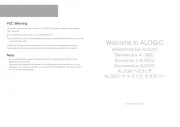
10 Februari 2025

23 December 2024

23 December 2024

23 December 2024

23 December 2024

12 Maart 2024

12 Maart 2024

27 Juli 2023
Handleiding Overige computer accessoire
- Kindermann
- I-Tec
- Konig
- Hamlet
- Gabor
- Lenco
- VisionTek
- Kingston Technology
- Canyon
- Gembird
- Havis
- Zalman
- Microlab
- Satechi
- Sonoro
Nieuwste handleidingen voor Overige computer accessoire

29 Juli 2025
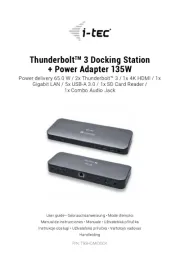
27 Juli 2025
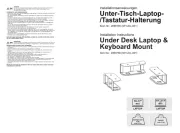
7 Juli 2025

17 Juni 2025
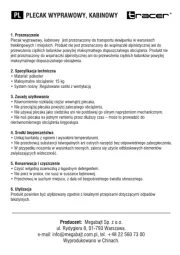
14 Juni 2025

14 Juni 2025
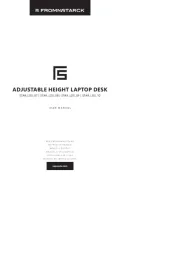
25 Mei 2025
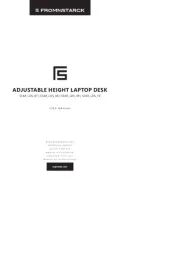
24 Mei 2025
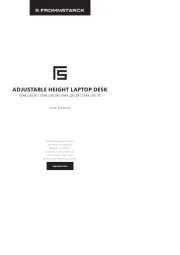
23 Mei 2025
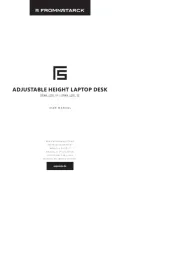
23 Mei 2025